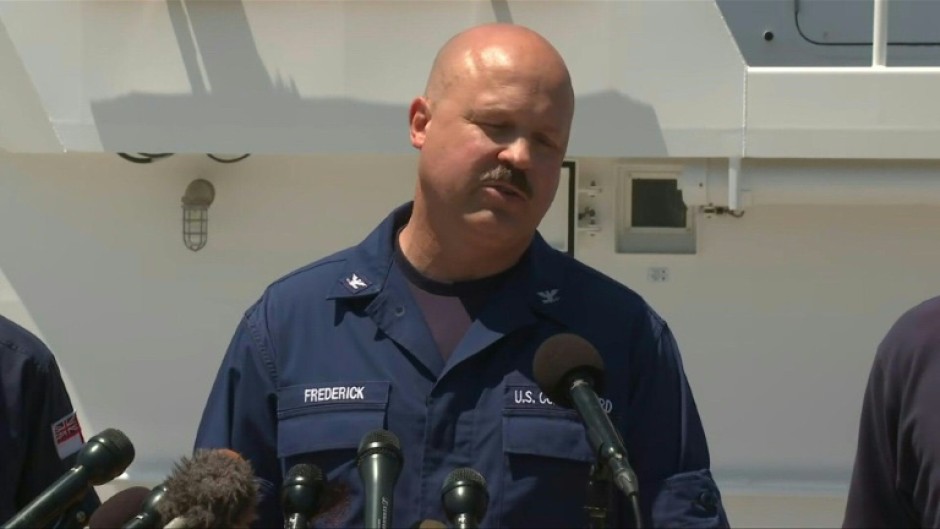
BOSTON - Rescuers searching for a missing tourist submersible near the wreck of the Titanic have detected "underwater noises" in the search area, the US Coast Guard said Wednesday, with oxygen for the five onboard rapidly running out more than two days after they lost contact.
All communication was lost with the 21-foot (6.5-meter) craft during its descent Sunday to see the remains of the British passenger liner, which sits more than two miles (nearly four kilometres) below the surface of the North Atlantic.
US and Canadian coast guard ships and planes are scouring 7,600 square miles of ocean (around 20,000 square kilometres) -- larger than the US state of Connecticut -- for the vessel, which was attempting to dive about 400 miles off the coast of Newfoundland, Canada.
"Canadian P-3 aircraft detected underwater noises in the search area. As a result, ROV (remotely operated vehicle) operations were relocated in an attempt to explore the origin of the noises," the US Coast Guard's First District said on its official Twitter page.
The ROV searches had so far not yielded results, but would continue, the military branch said, adding that data from the Canadian aircraft had been shared with US Navy experts to inform future search plans.
The submersible, named Titan, was carrying three fee-paying passengers, including a British billionaire and a Pakistani tycoon and his son. OceanGate Expeditions charges $250,000 for a seat on the sub, which is about the size of an average truck.
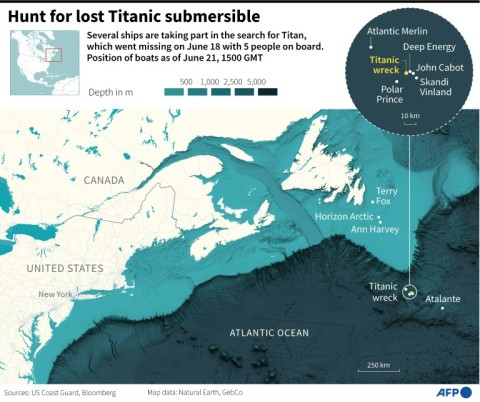
The US Coast Guard announcement is the most encouraging sign yet that those on board may still be alive.
Rescue aid has been pouring in from around the world, with a specialized winch system for lifting heavy objects from extreme depths, other equipment and personnel due to join the rescue effort on Tuesday night, according to the US Navy.
The Pentagon said it was deploying a third C-130 aircraft and three C-17s, while France's oceanographic institute announced a deep-sea underwater robot and its experts would arrive in the area on Wednesday.
"This is a very complex search and the unified team is working around the clock to bring all available assets and expertise to bear as quickly as possible," US Coast Guard Captain Jamie Frederick told reporters.
- 'Untested design' -
"Logistically speaking, it's hard to bring assets to bear. It takes time, it takes coordination," he added.
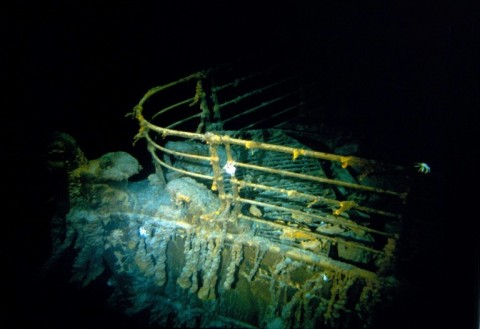
Rescuers estimate that passengers have less than two days of oxygen left, based on the sub's capacity to hold up to 96 hours of emergency air.
"There's about 40 hours of breathable air left based on that initial report," Frederick said at around 1:00 pm (1700 GMT) Tuesday.
Rescue efforts ramped up as a 2018 lawsuit came to light that alleged that OceanGate Expeditions' former director of marine operations was fired after he raised safety concerns about Titan.
David Lochridge cited the company's "experimental and untested design of the Titan" in a court filing.
The Titan lost contact with the surface less than two hours into its descent, authorities say.
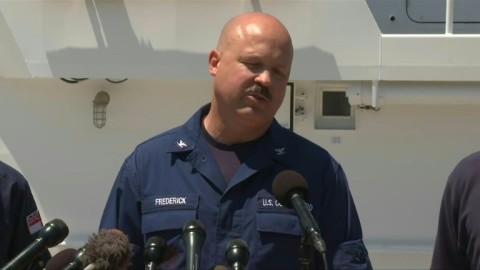
On board are Briton Hamish Harding, Pakistani businessman Shahzada Dawood, his son Suleman, OceanGate Expeditions CEO Stockton Rush and French submarine operator Paul-Henri Nargeolet, nicknamed "Mr Titanic" for his frequent dives at the site.
In an Instagram message posted just before their journey, Harding said a window had opened after days of bad weather and he was proud to be part of the mission.
"Due to the worst winter in Newfoundland in 40 years, this mission is likely to be the first and only manned mission to the Titanic in 2023," he wrote.
Harding, 58, is no stranger to daredevil activities and has three Guinness world records to his name.
A year ago, he became a space tourist through Amazon founder Jeff Bezos's Blue Origin company.
Shahzada and Suleman Dawood hail from one of Pakistan's richest families, which runs Karachi-headquartered conglomerate Engro, with investments in energy, agriculture, petrochemicals and telecommunications.

Mike Reiss, an American television writer who visited the Titanic wreck on the same sub last year, told the BBC the experience was disorientating. The pressure at that depth as measured in atmospheres is 400 times what it is at sea level.
"The compass immediately stopped working and was just spinning around and so we had to flail around blindly at the bottom of the ocean, knowing the Titanic was somewhere there," Reiss said.
He said everyone was aware of the dangers.
"You sign a waiver before you get on and it mentions death three different times on page one."
- Fears of a leak -
The Titanic hit an iceberg and sank in 1912 during its maiden voyage from England to New York with 2,224 passengers and crew on board. More than 1,500 people died.
It was found in 1985 and remains a lure for nautical experts and underwater tourists.
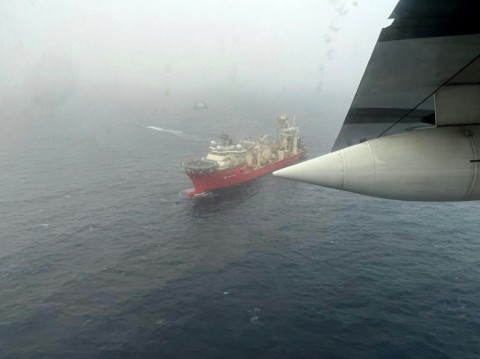
Without having studied the lost craft itself, Alistair Greig, professor of marine engineering at University College London, suggested two possible scenarios based on images of the Titan published by the press.
He said if it had an electrical or communications problem, it could have surfaced and remained floating, "waiting to be found" -- bearing in mind the vessel can reportedly be unlocked from the outside only.
"Another scenario is the pressure hull was compromised -- a leak," he said in a statement.
"Then the prognosis is not good."
pdh-bur/bgs/aha/mtp
By Lauren Owens Lambert, With Michael Mathes In Washington

